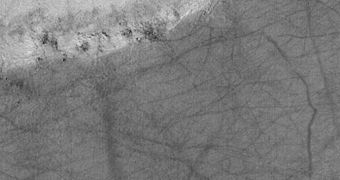Both Spirit and Opportunity have over the years seen dust devils forming on the Red Planet, but experts have remained puzzled as to why and how these features developed.
Now, using newly-found knowledge of how the same class of events develops on Earth, scientists hope they are closer in clearing up another of the mysteries Mars still keeps.
Generally, when dust devils develop, they leave behind dark streaks on the land, as seen from satellites. But recently experts managed to identify the first bright streaks left behind by the winds.
“This is the first observation and analysis of bright dust-devil tracks on Earth. They are known from Mars, but their formation mechanism is unknown,” says geologist Dennis Reiss.
He is the leader of the new research effort, and also holds an appointment at the Westfälische Wilhelms Universität Münster in Germany, Wired reports.
Planetary scientists say that the streaks devils leave behind are usually darker than the surrounding sand, and add that the appearance of bright features does not really make much sense.
The common trails appear as the winds that form the devils swoop all the smaller grains of sand from the area they pass over, leaving the underground, generally-darker layers exposed.
But camera trained on Red Planet from aboard the Mars Reconnaissance Orbiter (MRO) and the Mars Odyssey sometimes reveal tracks that appear brighter than the surrounding sand.
“They have posed a problem. How would that mechanism work with the bright streaks? That’s been the puzzle,” says expert Ronald Greeley.
He is based at the Arizona State University (ASU), where he is a planetary scientists specializing in Martian dark dust-devil trails.
Details of the new investigation, which was conducted by Reiss and his team, will be published in an upcoming issue of the top-rated journal Icarus.
An analysis of the bright dust devil streaks has already been published, in the July 28 issue of the esteemed scientific journal Geophysical Research Letters.
The answer to the mystery the two planets share came from the Turpan desert in northwestern China. It was here that the research team saw dust devils in action, leaving behind bright trails.
“The destruction of [small, ball-like clumps of sand called] aggregates on Mars would lead also to bright dust devil tracks,” Reiss argues.
“This is a plausible model for the formation of the bright tracks on Mars. This is a very nice study, a very nice result,” Greeley concludes.

 14 DAY TRIAL //
14 DAY TRIAL //